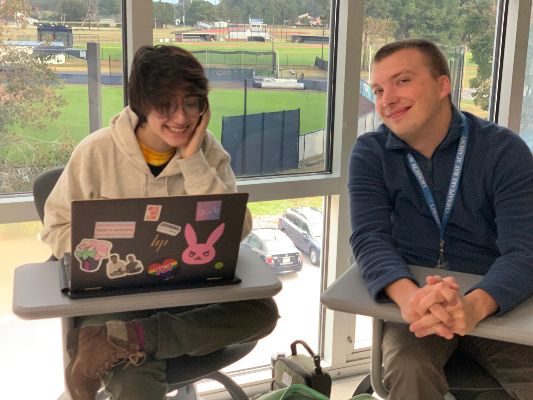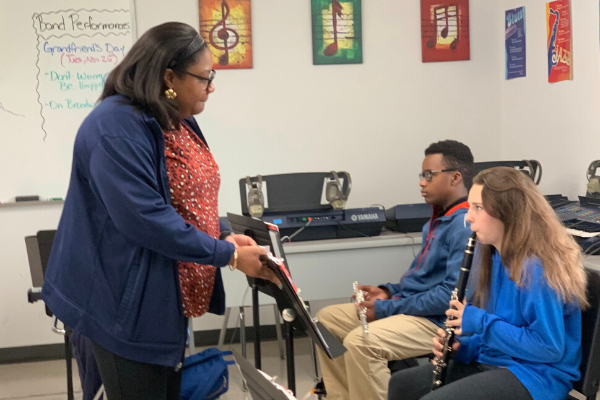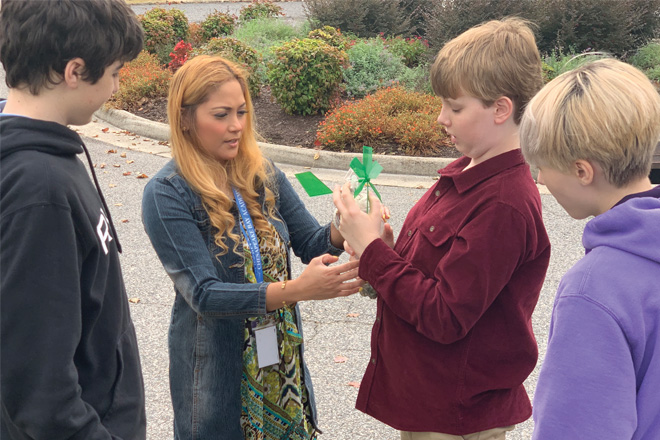Article by Katie Garcia, Chesapeake Bay Academy
Independent schools, like most of the U.S., are struggling with balancing a multi-generational workforce. Older generations seek different benefits than younger ones, and many have different career goals and seek different professional outcomes. While millennials have a (unearned) reputation for not putting their noses to the grindstone like older generations, they may save the rest of us from ourselves and help us get more out of work and life.
Tagged as adaptable, millennials are able to keep up with fast-paced change, truly believe in making a better world and strive to be drivers in that progress. For independent schools, this is good news. You hold the keys to much of what this generation is seeking in their professional life. Your schools are places millennials should want to work. For schools’ part, millennial employees are often prepared to lead the charge in the changing face of education and can help schools remain relevant and forward-thinking. So, how to recruit and retain millennial workers?
The five top values that millennials prioritize in their work are interesting work, achievement, collegial co-workers, work that is meaningful and helps people, and salary, according to Personnel Review. That’s right — salary is less important to millennials than meaningful work. The most commonly sought-after incentives are interesting work, work-life balance, job security and the training and resources in order to effectively and efficiently do their jobs. This is where independent schools can shine. Offering benefits like tuition reimbursement and professional development can pay dividends in terms of recruiting and retaining this next generation.
Recruiting
Research indicates that millennials ask organizations what they are doing to help their employees lead a more purposeful and meaningful life more frequently than previous generations. When considering a job, they often look straight to an organization’s values and are more drawn to cultures that emphasize mission over making money. This may be impetus to review your mission and vision statements and reinvigorate more senior staff to buy in to your school’s work. We often think of emphasizing our mission to prospective families and current students, and as something that guides the work of the school, but it is also a crucial piece for recruiting employees.
Chesapeake Bay Academy (CBA), for example, is a learning differences school, and that distinct mission is part of what makes it an interesting place to work. I highlight our mission statement and low teacher-to-student ratio in the recruiting process.
Millennials research potential employers via social media, and they are using social media as a means to find a job themselves. The bigger your online presence, the bigger your applicant pool. Not only are job seekers using websites such as LinkedIn or Facebook, but nearly half — 45% — look for a job on their mobile device, so consider if your school’s job ads are accessible and legible in that format.
Being transparent in your job posting or your initial contact with a potential employee will set the tone for how they view the job and the school. Something I cannot recommend enough is to disclose the salary range for the position. I understand it might be less than public school salaries and it might be less than the private sector, but disclosing salaries will save everyone time.

Hiring
Millennials are looking for more than to just go to work every day. They want to deeply and personally connect with the organization they are working for as well as the overall mission. During the interview process, consider highlighting opportunities for team members to give back to the community and policies that demonstrate social responsibility.
Transparency is again critical when interviewing — the school’s opportunity to encourage millennial employees buy into your school’s ideals. Having clear policies that you can explain to the potential employee, sharing details about the history of the school and providing honest answers about access to management are key.
The good news is that while salary is among millennials’ top five job requirements, it is not the first or even second.
Millennials tend to have high salary expectations for new jobs. Be prepared with data about relative salary levels in similar schools to set realistic expectations. Be upfront about the pay range, pay increases, potential for additional income and other compensation questions. Discuss health insurance costs and retirement matches as well as elective benefits. These can make a real difference to job candidates. The good news is that while salary is among millennials’ top five job requirements, it is not the first or even second.
Millennials often seek different benefits than older employees, such as extended time off and higher deductible insurance plans. Having both a higher and lower deductible insurance plan should serve well for recruiting millennials who will likely experience a shift in priorities as they become more established in their careers. They may not want to pay much for health insurance when they are younger but want a more robust option in the future. Short- and long-term disability benefits are a cost to the school but can provide employees peace of mind, and for the school’s part, supplement parental leave policies. Casual dress policies, reimbursement for continuing education and student debt forgiveness may also be benefits millennials seek. If your school offers any of these, highlight them in the interviewing process.
At CBA, we recently began offering new benefits such as pre-paid legal and vision insurance that covers glasses and contacts. Both these new benefits are paid for by the employee, at no cost to the school and minimal cost to employees. About a third of our staff signed up for them, and most of those were millennials.

Retaining
If you are seeking low turnover and the ability to continually build a dream team of instructional specialists, millennial recruiting may be a good place to focus your energy. Millennials prioritize job satisfaction, and several studies have shown that if they are satisfied with their job, their intention to job hunt or leave a position is lower than previous generations. They place less value on work for work’s sake and do not buy into previous generations’ idea that putting in overtime will accelerate their career. So, how to keep millennials happy?
Interesting Work
Millennials want to feel connected to their work, and they also want to feel challenged. Mission-focused schools offer both these things, as well as the opportunity for millennials to flex their creativity. You might ask millennial employees for their ideas to improve the annual fun run or get them involved in increasing community service. They might start a club or group based on a personal interest. Even if they aren’t at the front of the line to volunteer, they want connection and will likely contribute to creative efforts.
But how do schools pay for it? In addition to offering stipends, I’ve seen school administrators create a pool for the most deserving extracurricular activity leader. The teachers involved vote on which of their peers gets the additional money.
It goes without saying that millennials are immersed in technology — the generation shares a birth year with the internet, after all — and this facility can make them powerful researchers and innovators in the digital realm. For example, I hired a college intern who noticed that parents were having trouble setting up payment plans. She suggested building a how-to with screenshots and links that showed parents the process step-by-step. The resulting setup has helped parents, reduced questions for the business office and given our intern a real chance to impact school operations. Given a chance to be creative, millennials may run with it.
Millennials were raised in an environment of continual feedback, and they look for it in their workplace. They tend to be hyper-self-aware of their shortcomings and will likely seek out opportunities to learn and improve themselves as an employee and as a person.
Continual Feedback
Millennials were raised in an environment of continual feedback, and they look for it in their workplace. They tend to be hyper-self-aware of their shortcomings and will likely seek out opportunities to learn and improve themselves as an employee and as a person. That means they’ll expect more than a once-a-year check in with their supervisor and welcome clear and consistent direction for improvement.
Professional development can come with a hefty price tag, so thinking outside the box is critical. Perhaps you could partner with another local school to offer development. We’ve recently instituted a peer mentoring program that is distinct from performance management. Rather than getting feedback on what a teacher is doing well or where he/she needs improvement, the idea is to observe other teachers’ strengths and adapt them elsewhere. We encourage teachers to observe two to three days a year in different divisions (lower, middle or upper school) as well as different subjects. This is a great chance for connection in your teaching community as well.
You might consider partnering younger teachers with board members who may be receptive to their ideas or give them feedback about resources. We’ve successfully paired teachers newer to learning differences with board members who may be a parent or grandparent to a learning differences child, and they’ve been able to share experiences in a mutually beneficial way. When board members show up at extracurricular events like the fun run, that too can make a big difference to the employees who put the event together.
Growth and Promotion
Older ways of recruiting and retaining employees don’t suit the needs of the changing job market, let alone millennial job seekers’ ideals
Research shows that millennials tend to look for acknowledgment via promotion or pay increase within the first 18 months of a job in order to feel valued. They seek rapid growth for both the organizations they work for and themselves as they are growing into their careers. Make sure you identify high potential employees and engage them early on. If a salary raise isn’t an option for a tight budget, consider other ways to show the school appreciates their work and encourage growth. Peer recognition programs or a special treat for high-functioning teams could be ideas that don’t strain the budget.
Older ways of recruiting and retaining employees don’t suit the needs of the changing job market, let alone millennial job seekers’ ideals. As a new generation of workers are moving into positions once held by Baby Boomers and Gen-Xers, adapting the workplace will become more critical. Schools are seeking employees that are driven, innovative and forward-thinking. Effective management and school policies that empower and improve employees, coupled with millennials’ desire to achieve, could prepare this generation to be the forward-thinking leaders our schools need.



